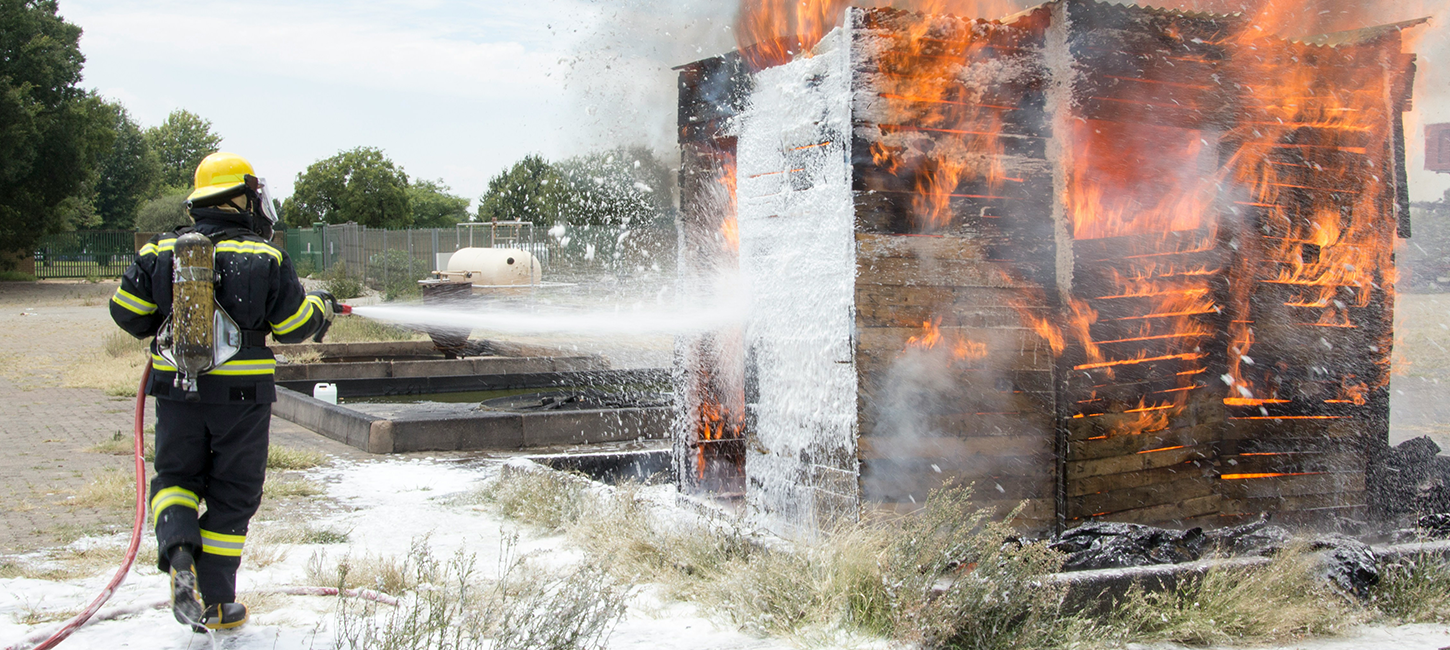Articles / PFAS / Water pollution / Water technology
PFAS in Firefighting Foams
PFAS in Firefighting Foams
August 6, 2025
PFAS in Firefighting Foams
In this article we discuss PFAS in firefighting foams, the long-term health implications of these ‘forever chemicals’ and regulations being enforced to safeguard people and the environment. It will also discuss how Arvia are tackling the PFAS challenges.

Aqueous film-forming foams (AFFF) are essential for combating flammable liquid fires.
PFAS in Firefighting Foams
Per- and polyfluoroalkyl substances (PFAS) are a group of human-made chemicals that have been used in various industrial applications and consumer products, including firefighting foams.
Aqueous film-forming foams (AFFF) are essential for combating flammable liquid fires, known for quickly suppressing intense flames and saving lives. However, the chemicals that make AFFF effective, particularly PFAS, are environmentally persistent and resistant to degradation. These substances are linked to significant contamination and adverse health effects on humans and wildlife.
Health Risks Associated with PFAS and AFFF
PFAS are known for their resistance to heat, water, and oil. However, their persistence in the environment and potential health risks have raised concerns. There is considerable evidence that exposure to AFFF have long term health impacts on military and civilian personnel.
- Ulcerative colitis: Studies have shown a significant association between AFFF exposure, particularly PFOA (perfluorooctanoic acid), and the incidence of ulcerative colitis.
- Liver disease and cancer: PFOS can disrupt normal liver functions, including lipid (fat), amino acid, and glucose metabolism. Firefighters, both military and civilian are at risk of liver cancer due to their regular use of AFFF.
- Kidney and testicular cancers: The International Agency for Research on Cancer (IARC) and other researchers have found that exposure to PFAS, particularly in AFFF, results in a significantly elevated risk of kidney, prostate, and testicular cancer.
- Thyroid disease/hypothyroidism: Thyroid disease is becoming increasingly prevalent among military personnel, and research indicates that military members may be at higher risk of thyroid disease compared to the public.
Legislation and Regulation
In response to these health risks, various countries and regions have enacted legislation to regulate the use of PFAS, particularly in firefighting foams.
United States
- Environmental Protection Agency (EPA): The EPA has been actively working on regulating PFAS under the Safe Drinking Water Act and has proposed a national drinking water standard.
- National Defense Authorization Act (NDAA): Recent NDAAs have included provisions to phase out the use of PFAS-containing firefighting foams in military applications by 2024.
European Union
- REACH Regulation: The European Union has included certain PFAS in its list of Substances of Very High Concern (SVHC) under the REACH regulation, restricting their use.<//li>
- European Chemicals Agency (ECHA): The ECHA has proposed a restriction on the use of PFAS in firefighting foams, with a transition period allowing for phase-out.
Australia
- National PFAS Position Statement: Australia has developed a national position on PFAS, aiming to reduce and eventually eliminate PFAS emissions.
- State-Based Legislation: Various states have implemented regulations to manage and phase out PFAS use in firefighting foams.

In response to health risks, various countries and regions have enacted legislation to regulate the use of PFAS.
Compliance Dates
The transition away from PFAS-containing firefighting foams is being phased in over several years, with key compliance dates including:
- October 2024: The U.S. military was required to stop using PFAS-containing firefighting foams, but two-year extensions have been granted where missions or safety could be compromised (with the transition to fluorine free alternatives).
- 2025-2030: Many European regulations propose a gradual phase-out of PFAS in firefighting foams, with complete bans expected by 2030.
- Ongoing: Australia and other countries continue to work on implementing their own timelines for compliance, with ongoing assessments and updates.
How Arvia is Tackling the PFAS Problem
Arvia has pioneered a unique technological solution to tackle our planet’s PFAS challenge head-on. Using advanced electrochemical oxidation, our PFAS wastewater treatment system ensures complete destruction of “Forever Chemicals” including AFFFs without harmful secondary waste. Scalable and sustainable, it helps industries meet regulations while safeguarding water and public health.
Nyex Florenox™ Reactors represent the next generation of Arvia’s electrochemical oxidation technology, built to perform efficiently at low pressure and temperature. The EO process relies on the mass transfer of PFAS to the electrode surface, which is optimised by Florenox advanced 3-D anode. These innovations make Florenox highly efficient and eco-friendly solution for PFAS wastewater treatment.
Conclusion
The global effort to mitigate PFAS-related risks is a testament to the importance of environmental and public health. As research progresses, it is crucial for industries and governments to collaborate in finding safer alternatives and ensuring compliance with emerging regulations.
About Arvia
Arvia is one of the world’s leading manufacturers of electrochemical water treatment products.
With design, manufacturing, and R&D in the UK, they also have labs in India, a facility in China and have expanded into the US.
Arvia’s treatment systems include Nyex.3 Florenox, Nyex Rosalox and Nyex Ellenox – three revolutionary systems specifically designed for tertiary water treatment, each delivering spectacular (up to parts per billion) results treating many recalcitrant pollutants in industrial wastewater like PFAS, endocrine disruptors and antibiotics.
To see how Arvia Technology could benefit many water treatment systems worldwide, check the Arvia website or make contact to set up a one-to-one consultation with a water science expert.
More featured articles
03.27.2025

Press Release - Arvia Technology Launches Proven PFAS Destruction Solution
03.24.2025

In this article we discuss PFAS regulations, why regulation is necessary and the impact on industry and consumers.
03.3.2025

This article examines PFAS, which consumer products it can be found in, exposure and the effects on the environment.
Our wastewater treatment expertise
Our water technology can be used to treat a variety of water treatment applications. Once we understand the nature of your wastewater and your final water quality target, our water treatment specialists can make recommendations as to how best to treat your water. Take a look at some of the Nyex applications here:
Need help? Speak with an expert
